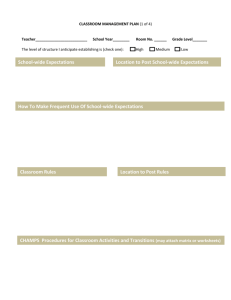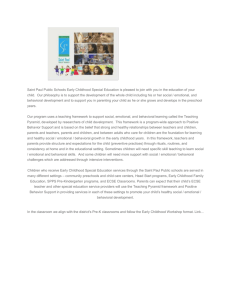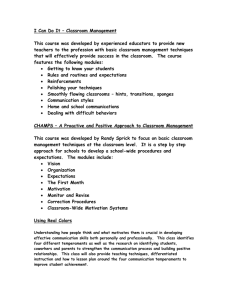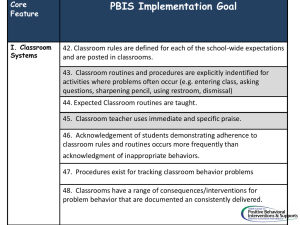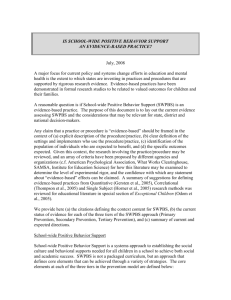Linking School-Wide Expectations To the Classroom
advertisement
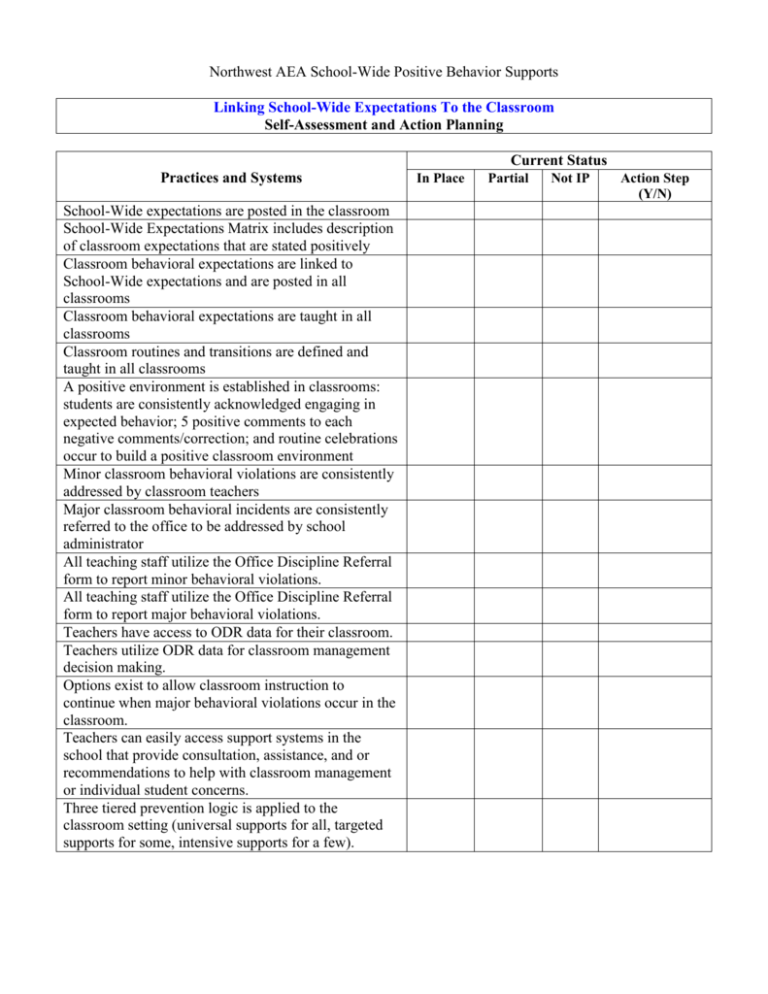
Northwest AEA School-Wide Positive Behavior Supports Linking School-Wide Expectations To the Classroom Self-Assessment and Action Planning Current Status Practices and Systems School-Wide expectations are posted in the classroom School-Wide Expectations Matrix includes description of classroom expectations that are stated positively Classroom behavioral expectations are linked to School-Wide expectations and are posted in all classrooms Classroom behavioral expectations are taught in all classrooms Classroom routines and transitions are defined and taught in all classrooms A positive environment is established in classrooms: students are consistently acknowledged engaging in expected behavior; 5 positive comments to each negative comments/correction; and routine celebrations occur to build a positive classroom environment Minor classroom behavioral violations are consistently addressed by classroom teachers Major classroom behavioral incidents are consistently referred to the office to be addressed by school administrator All teaching staff utilize the Office Discipline Referral form to report minor behavioral violations. All teaching staff utilize the Office Discipline Referral form to report major behavioral violations. Teachers have access to ODR data for their classroom. Teachers utilize ODR data for classroom management decision making. Options exist to allow classroom instruction to continue when major behavioral violations occur in the classroom. Teachers can easily access support systems in the school that provide consultation, assistance, and or recommendations to help with classroom management or individual student concerns. Three tiered prevention logic is applied to the classroom setting (universal supports for all, targeted supports for some, intensive supports for a few). In Place Partial Not IP Action Step (Y/N) Linking School-Wide Expectations To the Classroom Action Planning Practice/System Action Steps a. b. c. d. e. a. b. c. d. e. a. b. c. d. e. Person Responsible Date Done



